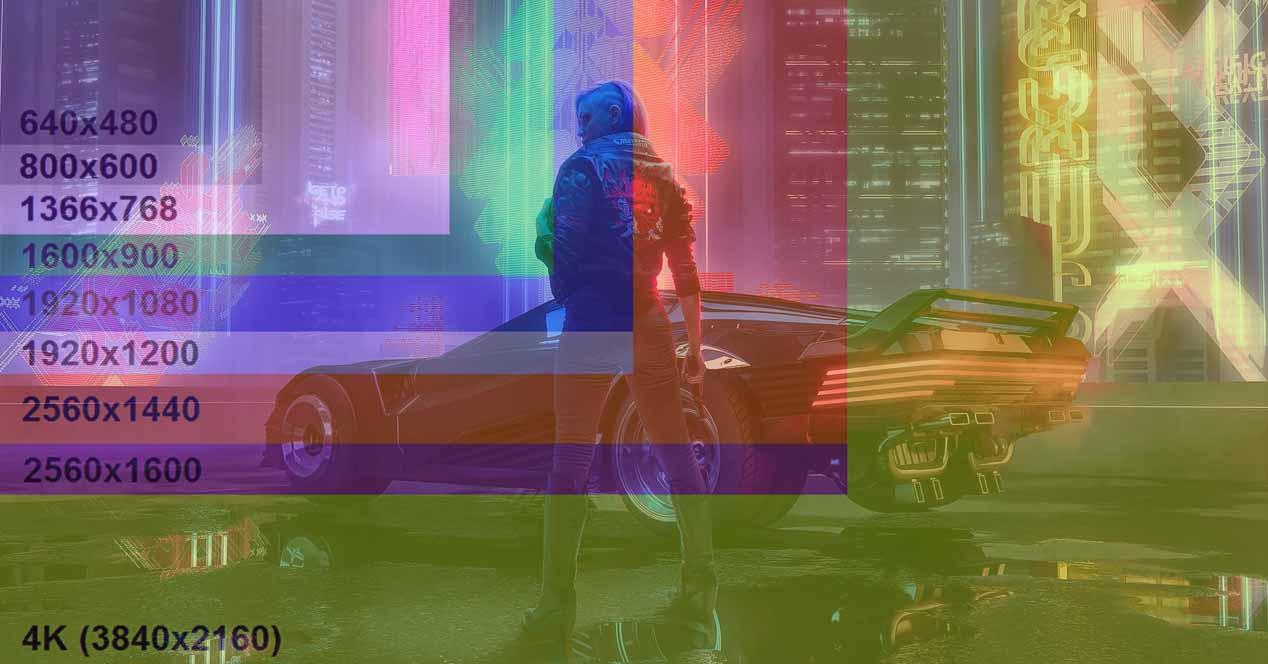All screens have a certain resolution, which is defined by two numbers that sound like a minimum to all of us and that really represent the number of pixels displayed on the screen. Obviously, the higher the number of pixels displayed the more load the graphics card has to carry, and that’s why we said before that it has a lot to do with performance. But before we look at the most used resolutions, let’s start from the beginning, because without knowing the basics, you won’t know what exactly those numbers that define the resolution mean.
What is monitor resolution and what does it entail?
When we talk about resolution of gaming monitors, we can do so by giving two numbers or with a name that defines it. For example, Full HD resolution is 1920 x 1080 pixels, and those two numbers mean that the screen is 1920 pixels wide by 1080 pixels high. If we multiply one number by the other, we get the total number of pixels displayed on the screen, in this case 2,073,600 pixels. In the case of a 4K monitor, its resolution is 3840 x 2160 pixels, or 8,294,400 pixels displayed on the screen in total.
The more pixels the screen displays, the sharper the image will be. Continuing with the example of Full HD and 4K, you may have already noticed that 4K shows exactly four times as many pixels as Full HD, which means that what is shown in Full HD with a single pixel in 4K is shown in 4, allowing greater definition, better transition between colors and smoother edges; Overall, sharpness and visual experience are improved.
The trade-off is that the graphics card has to process four times the pixels in each frame, so the work it has to do is significantly increased and therefore performance can be reduced.
Most used resolution in gaming monitors
The history of monitors dates back to the late 1890s, but it was not until the 1970s that the first CRT (cathode ray tube) monitors appeared, and if we want to go into the history of monitors gaming and their resolution, we have to move on for a few more decades, until at least the 1980s, when gaming began to take hold in the market.
At that time, the most common resolution on gaming PCs was 640 x 480 pixels (VGA), although it didn’t last long in favor of resolving SVGA (800 x 600 pixels). Obviously at that time monitors had a 4: 3 aspect ratio (currently the most used is 16: 9) and we couldn’t think of them as gaming monitors, as monitors for this purpose only started to appear only in the 1990s and early. 1990s. 2000s, with the advent of the first commercial LCD monitors.
In the early 2000s, LCD monitors began to replace CRTs in the market, and by the late 2000s they did so almost completely (in 2005, LCDs already accounted for 75% of the market share) thanks to to the fact that they were quite inexpensive, making them affordable for almost all users. In 2010, CRT monitors were officially considered “dead”. Back then, the most common for gaming were monitors with 1366 x 768 resolution (the resolution of many laptops) is 17 inches in size, although it didn’t take long for resolution gaming monitors to appear 1680 x 1050 pixels.
Although the first Full HD (1920 x 1080) monitors were unveiled in 2006, it was only in the 2010s that we can say that they started to be used the most for gaming, and certainly today. the most used resolution in gaming monitors remains Full HD although there are much higher resolutions, and this is due to performance, as competitive pro gamers prefer higher refresh rates which allow more FPS than more resolution.
Obviously, during this decade gaming monitors with different resolutions started to appear, and although Full HD resolution is most common in gaming monitors, we also have a resolution of 2K or 1440p (2,560 x 1,440 pixels) and of course 4K resolution, in addition to many variants among which stand out ultra-wide monitors in 21: 9 format (in particular, monitors with resolution 3440 x 1440 pixels are common among gamers).
When it comes to 4K, we have to say that although manufacturers have been pointing it out to us with marketing strategies for years, it was only a few years ago (around 2018) that graphics cards were successful. to decently move games to this resolution and therefore when these gaming monitors started to become popular. Additionally, in recent years (2020) we have also seen 4K monitors with specific gaming technologies like G-Sync / FreeSync, high refresh rates, etc.
So if we stick to history and take into account not only the gaming monitors that manufacturers sell us as such, but the resolutions most used by gamers, these would be the most common resolutions, being as we have already said the most used Full HD and taking into account that in this table we are not talking about the date of onset but popularization.
| Resolution | last name | Period in which it became popular |
|---|---|---|
| 800 x 600 | SVGA | 80 years |
| 1366 x 768 | HD | 90s |
| 1,920 x 1,080 | Full HD | From the 2000s to the present day |
| 2,560 x 1,440 | 2K | From 2010 |
| 3440 x 1440 | UWQHD | From 2016 |
| 3 840 x 2 160 | 4K | From 2018 |
What about you, what resolution do you have on your gaming monitor and what resolutions have you taken so far?











